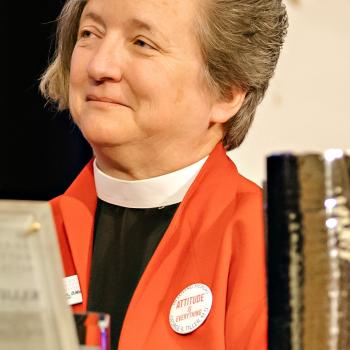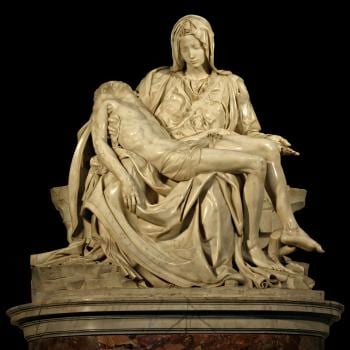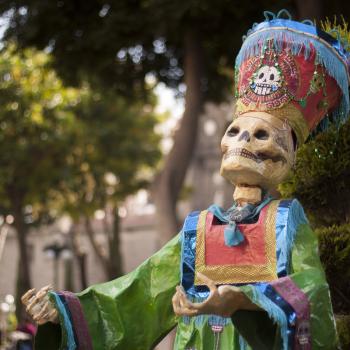I was talking philosophy with my college student son the other day and I asked, “So do you know what fatalism is?”
“Something about death?”
It reminded me of the time I asked my other son if he knew what Nihilism was and said, “Something to do with Egypt?”
I explained that fatalism was not so much about death as about fate. The fatalist believes that he is controlled by fate–some greater force over which he has no control.
There are many forms of fatalism. The Eastern idea of karma is fatalism as is the connected idea of the caste system. In the West scientific evolutionism is a kind of fatalism: your destiny is determined by genetics and the overarching power of evolution. Extreme Calvinism with its emphasis on predestination is a form of fatalism as are every kinds of superstition–fortune telling, astrology, necromancy or belief if “luck” Fatalism is a typical part of paganism–the gods are in control and the best you can hope for is to appease them in some way and win their favor.
But on pondering it all further, it struck me that my son’s comment that it was linked with death was also not wrong. It was one of those linguistic links that provide a new insight–like a rhyme, a pun or the realization that two words are from the same root.
For fatalism is linked with death. The ultimate power over which we have no control is the power of death. You will die. That is your destiny. In the face of that there are only two choices: the Stoic choice–“Keep a stiff upper lip. Try to lead a good life and be a decent chap. It will all come to nothing in the end, but let’s not talk about that too much.” or the Epicurean choice: “Eat, drink and be merry for tomorrow you die.”
In other words, the ultimate fatalism is fatality.
The result of fatalism is a fatalistic attitude–that you have no control over your destiny because powers that be are greater than you and you are on a path you cannot change and any attempt to do so will fail, or even if it succeeds you will be cursed because you broke the all powerful plan of destiny and disrupted the order of the cosmos.
The struggles, death and resurrection of Jesus Christ however, brings about the death of fatalism. Both fatalities and fatalism die on Easter Day.
Why? Because in Jesus Christ we see the struggle of free will. First in his mother Mary we see the human being say to God, “Thy Will be Done” then in the Garden of Gethsemane we see Jesus say, “Thy Will be Done”. In those transactions we so not see mere submission of the human being to God as we see a person submitting to their karma or submitting to their destiny. Instead we see a dynamic interaction in which the human will is joined to God’s will and is therefore empowered by God. This is not a subjugation of the will but an empowerment of the will as it is joined to the Divine Will.
That is why Mary says, “With God all things are possible.”
This means a radical new freedom for humanity. Because of Mary’s choice and because of her son’s choice humanity is no longer enslaved by fate, but empowered to make real choices to change their lives and change the world.
The resurrection put the seal on this transaction. It confirmed and validated the transaction with an ultimate victory. In the resurrection the choice of Mary and the choice of Jesus to go 100% with God unleashed a new power for the human race.
From then on humanity could take control of its destiny–for good and also for ill.
Should we choose for evil we would soon fall back into bondage to fatalism because choosing evil invariably enslaves the will and locks us into patterns beyond our choosing.
Should we choose for good we continue to empower our will by joining it to God’s will so that the Divine Will flows through us making all things possible.
This is the ultimate end point of the resurrection. It has changed the world because it changed humanity and in changed humanity because it changed individuals.
It has been quietly doing this work for the last two thousand years.
And it ain’t over yet…
Image The Passion of the Christ












